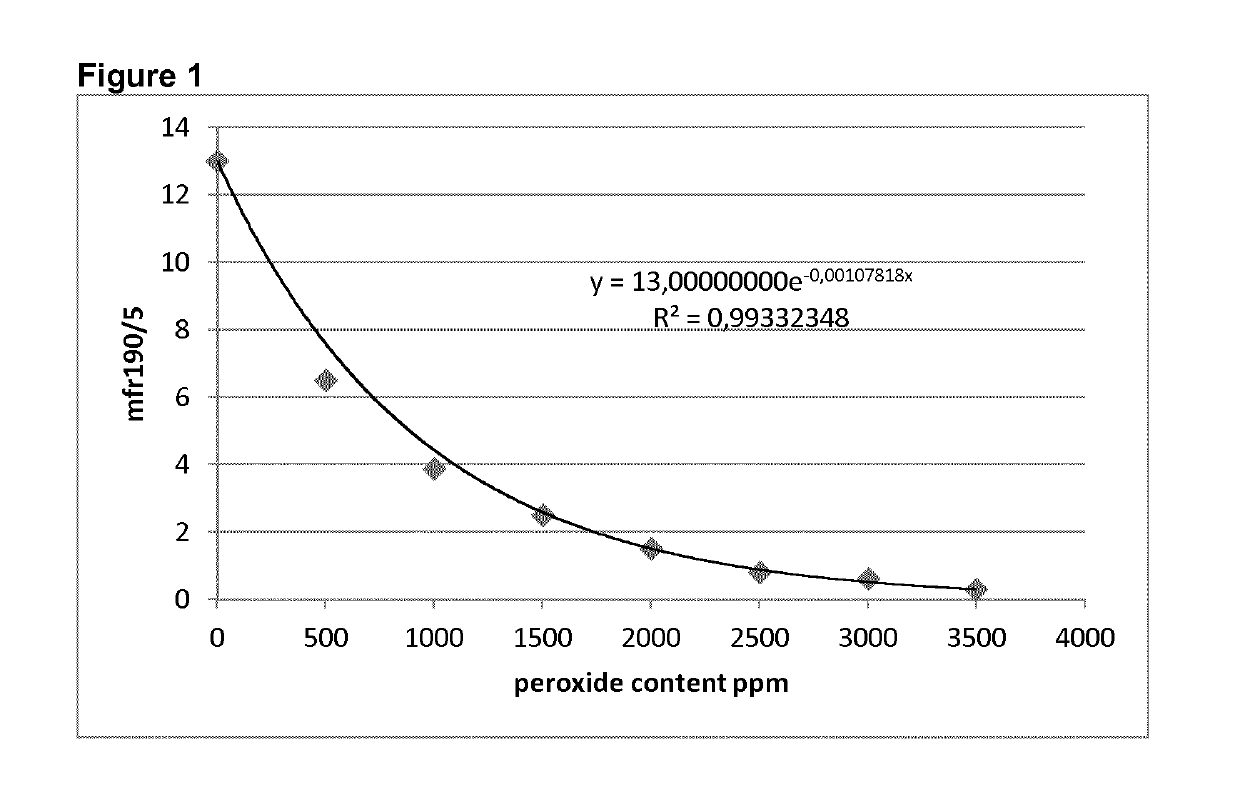Molecular modification of polyethylene resin
a technology of polyethylene resin and molecular modification, which is applied in the direction of plastic recycling, recycling and recovery technologies, etc., can solve the problems of more unpredictable and difficult starting point for any modification of recycled polyethylen
- Summary
- Abstract
- Description
- Claims
- Application Information
AI Technical Summary
Benefits of technology
Problems solved by technology
Method used
Image
Examples
example 1
[0131]The following peroxides were used in the examples:
[0132]Pox 1: Peroxide masterbatch commercially available from AkzoNobel, containing 5 wt % of 2,5-Dimethyl-2,5-di(tert-butylperoxy)hexane (Trigonox 101, CAS 7863-7) and the carrier material is Polypropylene Random copolymer. Parameters of Trigonox 101: Mw=290 processing temp: 175° C. Typical crosslink temp: 175° C.
[0133]Pox 2: Peroxide commercially available from AkzoNobel as Trigonox 145-E85, containing 45 wt % of 2,5-Dimethyl-2,5-di(tert-butylperoxy)hexyne-3 [1068-27-5] on a combination of calcium carbonate and silica carrier. Parameters of Trigonox 145-E85: Mw=286 processing temp: 145° C. Typical crosslink temp: 185° C.
[0134]Pox 3: Peroxide commercially available from AkzoNobel as Trigonox 311, containing 50 wt % of 3,3,5,7,7-Pentamethyl-1,2,4-trioxepane [215877-64-8] on silica carrier. Parameters of Trigonox 311: Mw=174 processing temp 180° C.; Typical crosslink temp: 220° C.
[0135]The following polyethylene samples were use...
PUM
| Property | Measurement | Unit |
|---|---|---|
| Temperature | aaaaa | aaaaa |
| Temperature | aaaaa | aaaaa |
| Weight | aaaaa | aaaaa |
Abstract
Description
Claims
Application Information
 Login to View More
Login to View More - R&D
- Intellectual Property
- Life Sciences
- Materials
- Tech Scout
- Unparalleled Data Quality
- Higher Quality Content
- 60% Fewer Hallucinations
Browse by: Latest US Patents, China's latest patents, Technical Efficacy Thesaurus, Application Domain, Technology Topic, Popular Technical Reports.
© 2025 PatSnap. All rights reserved.Legal|Privacy policy|Modern Slavery Act Transparency Statement|Sitemap|About US| Contact US: help@patsnap.com

